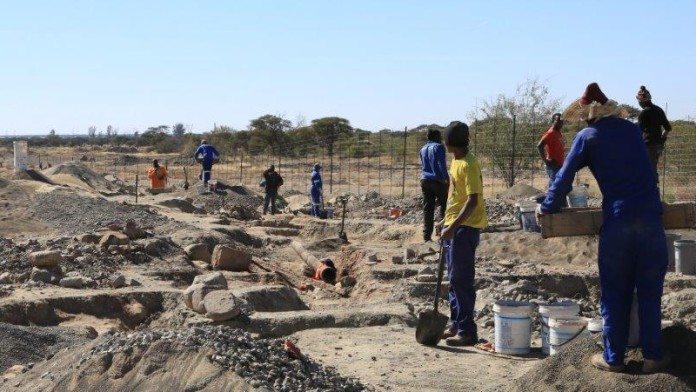
ONE interesting development to come out of the latest illegal mining disaster in which miners – ‘zama-zamas’ – were killed at Langlaaate near Johannesburg has been the suggestion by Cosatu that the South African government decriminalise the activity.
“It is now obvious that focusing on criminalisation of the independent small scale mining, where there are millions of unemployed people desperately looking for jobs is not the solution,” it said.
“The federation is calling on the Chamber of Mines and Government to explore the possibility of legalising and regulating the small scale mining as a way of minimising dangers and also removing the criminal elements that send some of these desperate people underground,” it added.
Cosatu’s notion is far from hare-brained. The Chamber of Mines has raised this notion too. “It is unlikely that these miners can be absorbed into the work force, instead they could create small scale businesses which could create employment and benefit communities,” it said in a report in February. The fiscus could also benefit, it added.
According to the International Council for Mining and Metals (ICMM), there are examples where private sector co-operation with the informal sector has worked such as in the Democratic Republic of Congo’s copper fields in which Ruashi Mining, a company once operated by Metorex, a Johannesburg listed firm before it was bought out, worked with the artisanal miners near its mine.
What’s required, however, is a mind shift on the part of both sides, and the government.
The ICMM said in a report that legislation has to be amended to allow for the issue of small scale mining permits while mining firms would have to invest in the community involved in mining by providing micro-finance and improving the safety culture. For their part, artisanal miners would be required to work in cooperatives.
The benefits extend to improving the fatality rate which is estimated to be 90 times worse than in the large scale mining sector. The environment is also assisted as illegal small scale miners are infamous for using mercury in amalgam – the agent in a process through which gold is extracted from ore.
Cooperation with small scale mining also helps with the safe rehabilitation of mined-out resources provided the artisanal miners are informed early enough of mining company decisions whilst exploration is also assisted, claims the ICMM.
It might be along these lines that AngloGold Ashanti is able to resolve its own influx of artisanal mining at its Obuasi gold mine in Ghana where thousands from the local population have invaded its high grade shaft, currently on care and maintenance whilst it sets about a restructure.
In South Africa, the distribution of artisanal mining is not as significant.
According to the ICMM, there are about 5,000 to 50,000 illegal miners operating in the country; not a very exact number perhaps underpinning one of the problems with the issue, but much less than in Zimbabwe where up to 500,000 illegal miners are known to operate, especially its diamond resources. Still, the problem is a socially troubling one.
The Chamber of Mines estimates that about 70% of all arrested illegal miners are also illegal immigrants feeding a five-tier system which has the impoverished miner operating at the bottom of the chain and unwitting, offshore metal refining companies at the top. The other three tiers consist of local and regional buyers of metals and other criminal elements participating in an industry that generates R6bn in revenue a year.
But is it as simple as forming joint ventures with zama-zamas critics say, who add that business can’t get involved with illegal activity?
A lot of so-called ‘artisanal’ mining in South Africa is in deep underground mines which require significant recapitalisation in ventilation and security in order to make them mining-ready again, assuming they are even worth mining in the first place.










